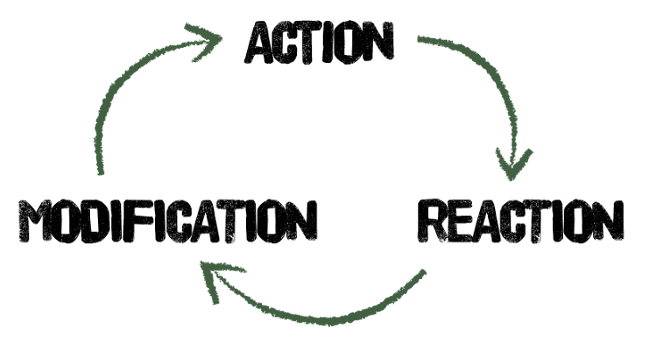Brought on by the steady rise in mobile users and usage worldwide, mobile user experience (or Mobile UX) has recently become a major focal point for many digital marketers. It essentially encompasses how customers experience a mobile app while they’re active in the app itself. With the goal of offering a smooth and user-friendly UX, mobile UX is something which must be continuously optimised – especially if businesses wish to maintain a loyal and satisfied customer base. This is where the collection of in-app feedback comes in handy.
Updated August 2021
The in-app feedback collection process is slightly different from that of websites. The difference lies mainly in the way that feedback forms are run. For example, a lot of the triggers such as exit intent and mouse movement are no longer detectable in mobile apps.
So what is it exactly that in-app feedback can do for your mobile user experience? Let’s take a look.
Why collect in-app feedback?
There are lots of reasons to collect in-app feedback. We’ve picked the top four reasons why we think you should start collecting in-app feedback, today. Let’s dive in!

Free White Paper: Optimising the Mobile Experience with In-App Feedback
A guide to in-app feedback for mobile product owners
and mobile marketers.
Keeps you in touch with how your app is performing.
One of the great things about collecting in-app feedback is that it can give you very specific feedback on, for example, a feature you’ve launched (or intend to launch) or an update you’ve recently come out with.

According to the Lean Start-Up methodology, applying short feedback cycles before building a product (also known as minimum viable product) is the key to creating a truly successful product.
These cycles enable you to continually test out ideas in your app by collecting feedback from customers (or other parties, such as buyers and partners) and using that feedback to make further improvements and enhance the app.
It’s cost-effective.
Developing a mobile app can be an expensive undertaking. Adding new features and altering existing ones can be quite costly if these decisions are based on presumptions alone.
By collecting feedback from customers who have experienced your app first-hand, you will be much better equipped to make meaningful changes to your app.

In-app feedback allows you to get to know your users.
In addition to providing you with insights into the customer journey and how your customers are experiencing the app, in-app feedback can also provide you with detailed information about these customers. You can collect data such as demographics, browser type, OS and more.
Having this information on hand enables you to form personas (or classifications of users). If you cross analyse personas with other feedback results (such as Net Promoter Score, Customer Effort Score or Customer Satisfaction) you’ll be able to create not only a more personalised experience for your customers but also develop an app you know they’ll like.
You can efficiently prioritise your roadmap
Many businesses who are building a new mobile app have tons of exciting features on their roadmap. Developers tend to get ahead of themselves sometimes and start rolling out features all at once. However tempting this is: hold your horses. Implementing too much too fast can be overwhelming for your app users. Not only that, but it can also cause quite a bit of chaos in the UX department. Try starting off little by little, and test as you go. Most importantly, listen to your customers and what they have to say, so you can identify which features are most important.
Different ways of collecting in-app feedback
Recognising that the collection of in-app feedback can be valuable to your company is one thing. Doing something about it is another. With native and hybrid apps (this does not include mobile-optimised websites), there are three ways in which feedback can be collected: Webviews, API posts and SDKs. Which method should you choose? This is entirely up to you and your business.

Ready to see Mopinion in action?
Want to learn more about Mopinion’s all-in-1 user feedback platform? Don’t be shy and take our software for a spin! Do you prefer it a bit more personal? Just book a demo. One of our feedback pro’s will guide you through the software and answer any questions you may have.







